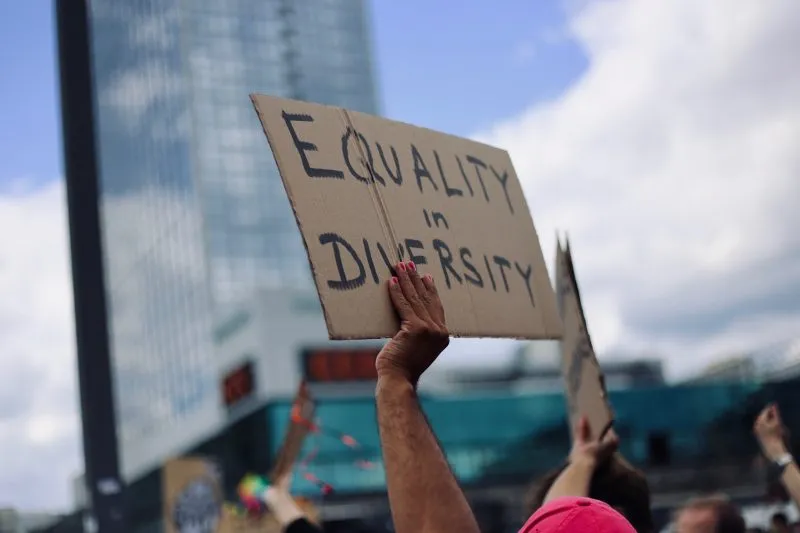The idea of discrimination in the workplace is not new; you’ve probably read of countless cases in the news, have had friends or family experience something similar or perhaps even been subjected to it yourself. In fact, a recent report by Nasdaq found that 55% of people have experienced discrimination at their current place of work. As an employer this can be worrying to hear, but by understanding how to identify discrimination in all its different forms you’ll be better equipped to make sure that your employees are adequately protected and a hostile work environment does not emerge.
Safeguarded Characteristics and Workplace Discrimination
Because discrimination is directly tied to action made on the basis of legally safeguarded characteristics, it is important to know what these are and what they can include.
These protected attributes can differ depending on where you are and the field of work you operate in but typically include:
- Age e.g., not hiring an older yet qualified candidate on the assumption that they will not understand the necessary technology.
- Gender e.g., not promoting a qualified female employee under the assumption she is not capable of leadership
- Disability e.g., failing to accommodate to certain disabilities
- Race e.g., treating an employee with excessive suspicion or hostility due to their race in comparison to their fellow employees
- Religion e.g., firing someone because they took a day off for a religious holiday
- Sexual orientation e.g., harassment against an employee on the basis of their sexual orientation
- Parental status e.g., retaliating against an employee for seeking paternity leave
Direct Workplace Discrimination
The first distinction that must be made is between direct and indirect discrimination.
Direct discrimination refers to occurrences when an individual is subjected to negative treatment based on:
- An attribute that is legally safeguarded.
- The assumption of an attribute that is legally safeguarded
- Connection to an individual that has a legally safeguarded attribute
- Direct discrimination can be both intentional or unintentional and is often the easiest to identify.
Some examples include:
- Being denied opportunities for promotion or training
- Harmful verbal remarks in reference to the protected attribute
- Not considering an applicant for a job because of their age
- It is important to remember that such discrimination, regardless of whether it was intentional or not, is harmful to the employee and the overall health of the organisation. Just because the discrimination was not deliberate, does not mean a legal claim cannot be filed or that the workplace environment is not negatively impacted.
Indirect Workplace Discrimination
Indirect discrimination refers to policies, rules or guidelines implemented neutrally which everyone must follow but are disadvantageous to a particular group of people on the basis of a legally safeguarded attribute.
These policies or rules can be a formal or informal implementation and put in place on a singular or consistent basis. It can refer to but is not limited to hiring criteria, conditions for promotions, dress codes or qualifications and provisions.
Indirect discrimination is not as easy to identify as direct discrimination and is oftentimes unintentional. For example, you could have a dress code policy that applies to all employees in the exact same manner because you’re aiming to be fair. However, if the policy doesn’t allow for certain hairstyles or coverings, it ends up being discriminatory against employees from certain ethnic backgrounds or who have certain religious beliefs.
In this situation, having the same rules for everyone is not viable and the approach must be altered to cater to the diversity of all the employees. This form of discrimination is considered indirect as the original intent was not to discriminate against anyone.
Objective Justification
As an employer, you might have good reason to consider introducing a rule or policy that may result in a difference in treatment. For example, you might be trying to make sure your employees health and safety is not compromised.
When this occurs, to prevent the action from being considered discriminatory, an objective justification can be provided. An objective justification is where an employer or service provider showcases that its rules or policies serve a valid purpose and have been implemented for good reason.
There are a few criteria that must be met when proving objective justification and these include:
- Financial incentive is not the reason behind the policy/action.
- The aim of the policy/action must meet a legitimate consideration
- Whether any potentially discriminatory actions are proportionate to the benefit derived from the policy/action
- There is not alternative means of accomplishing the aim
In most cases, an objective justification can only be utilised as defence when the targeted attribute is age. A difference in treatment on the basis of any other protected characteristic typically falls under direct discrimination.

Harassment
Harassment is when one is subjected to unwanted behaviour from someone else on the basis of or an association with a safeguarded characteristic.
The behaviour must contribute to developing an offensive and hostile environment or in effect, seek to shed the dignity of the victim.
Whilst there are no rules on what this behaviour could include, some examples are:
- Inappropriate gestures that are mocking in nature
- Sexually suggestive or explicit comments
- Excluding someone intentionally and consistently
- Making insulting jokes about an ethnic group
An important consideration with harassment is that claiming no intention to harm is not adequate as a defence. The victims’ experiences are the focus so as the employer, it is important to have a code of conduct in place that is adhered to by everyone at work.
Victimisation
Victimisation occurs when a worker does a protected act and is then discriminated against as a result. For example, if an employee made a complaint at work, or supported someone else’s complaint, then suffered detriments like bullying or being demoted.
Victimisation should not be tolerated at all in the workplace as not only can it be incredibly harmful to the employee, but it inhibits a healthy company culture.
Having an environment where employees don’t feel comfortable speaking up about negative treatment in fear of retaliation against them should be actively prevented. As an employer, you can be held responsible for victimisation even if you yourself were not the perpetrator, making this even more imperative.
To conclude, discrimination can take on many different forms within the workplace. Having policies in place to prevent discrimination, and actively making sure that any revisions or extra provisions are included, is incredibly important to making sure that the workplace does not suffer long term detriment. As an employer, you owe a duty of care to employees to protect their best interests at work and making sure you remained informed and aware about discrimination is one way you can do that.
Let's Get Started
Interested in learning more about how Polonious can help?
Get a free consultation or demo with one of our experts




